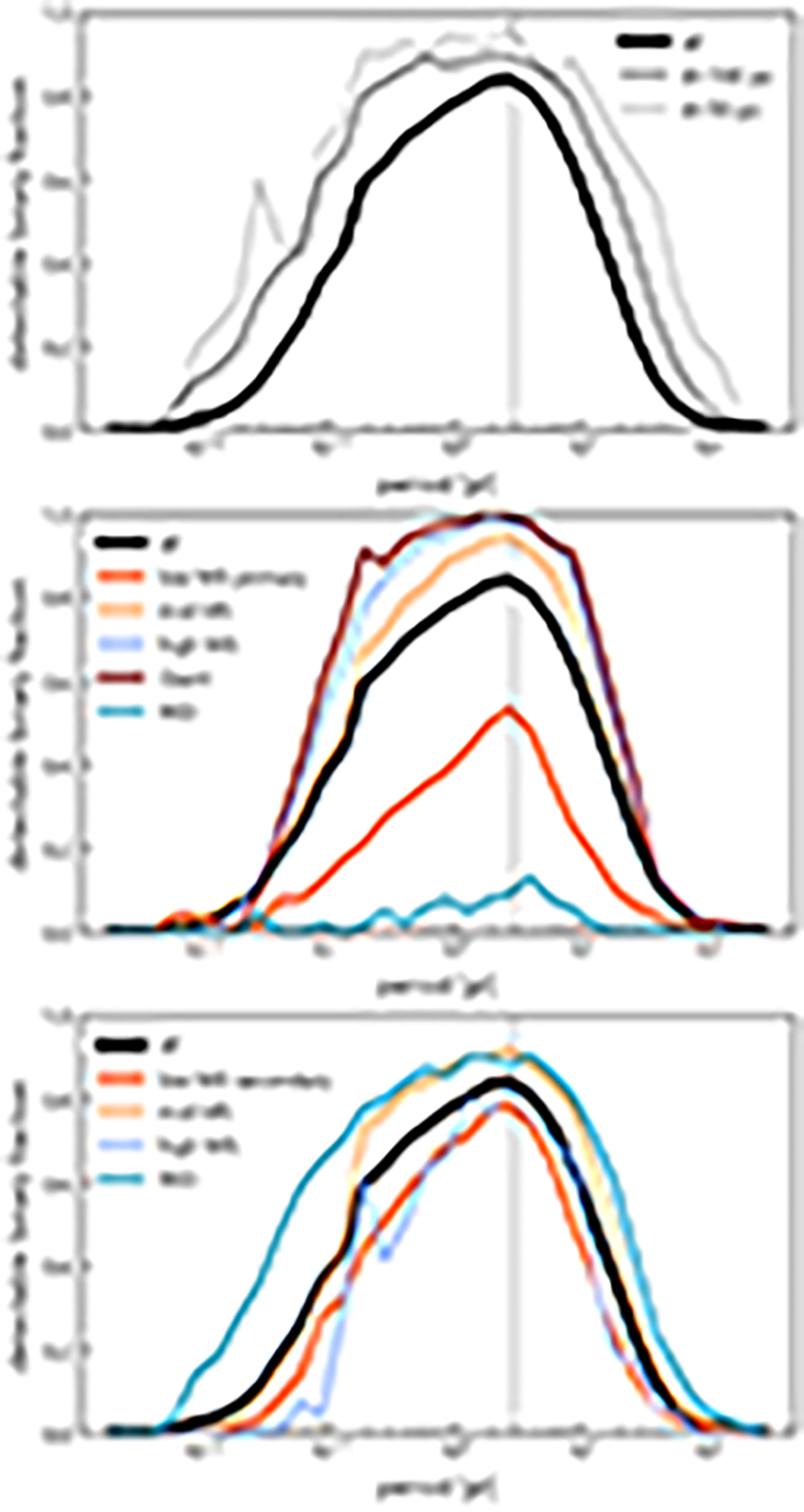Fig. 9.

Download original image
Fraction of detectable binaries as a function of period, comparing the full population (within 200 pc) to subsets. Top panel: detectability within some distance range. Middle panel: detectability dependent on the type of the primary. Bottom panel: detectability dependent on the type of the secondary. The vertical line at 34 months shows the time baseline of Gaia DR3 (and is the optimal period for binary detection). MS stars are split into three subgroups: high (MG < 4), low (MG > 10) and mid (in between these two cuts). Around 15% of MS primaries fall into the high bin and another 15% into the low bin. Close to half of the secondaries are low, and the vast majority of the rest are mid (the number of high-mass MS secondaries is small, and giant secondaries are negligible).
Current usage metrics show cumulative count of Article Views (full-text article views including HTML views, PDF and ePub downloads, according to the available data) and Abstracts Views on Vision4Press platform.
Data correspond to usage on the plateform after 2015. The current usage metrics is available 48-96 hours after online publication and is updated daily on week days.
Initial download of the metrics may take a while.


